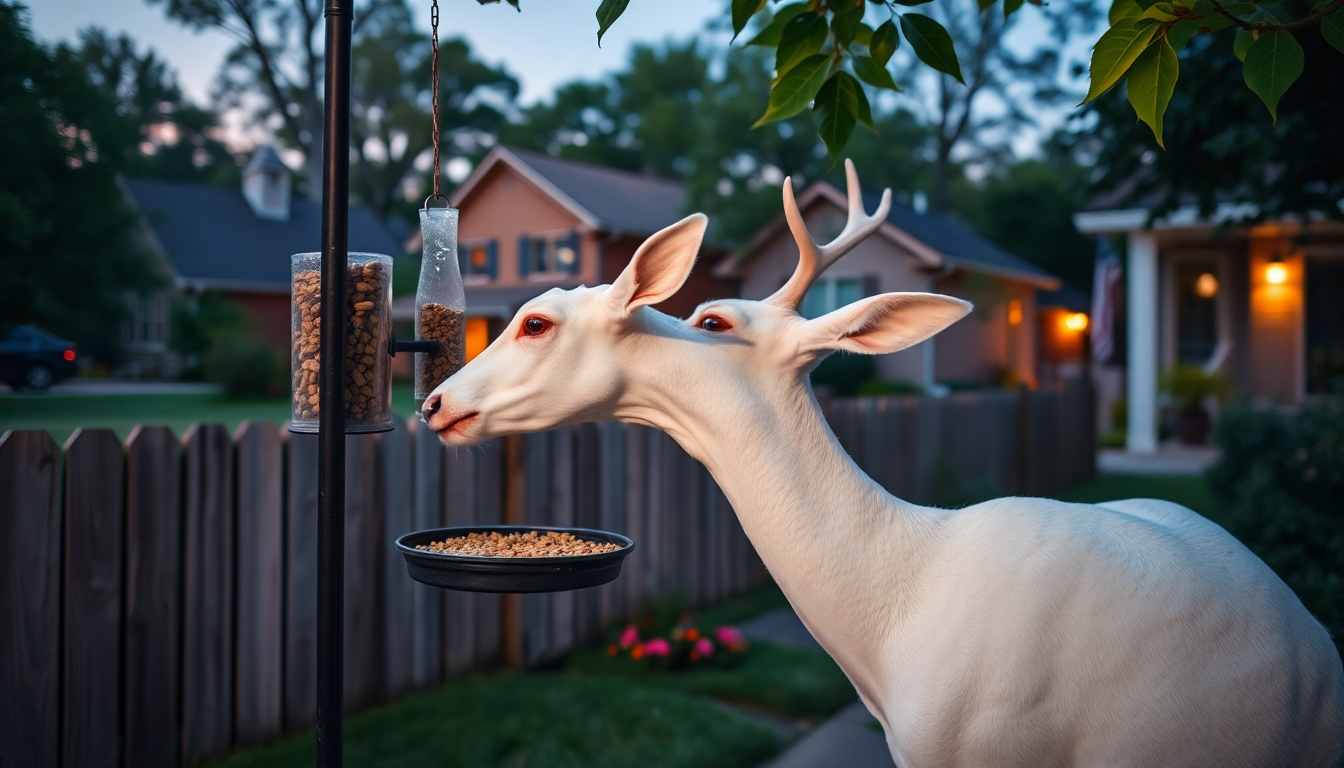Table of Contents
In a rare and fascinating event, an albino deer was spotted enjoying a late-night snack from a bird feeder in a suburban neighborhood of St. Louis, Missouri. But this sighting is more than just a pretty picture; it sheds light on the intriguing world of albinism in wildlife.
Did you know that albinism, a genetic condition that results in a lack of pigmentation, occurs in about one in every 30,000 deer? These remarkable creatures, often referred to as ghost deer, provide a unique look at the diversity within deer populations and the challenges they face in their natural habitats.
Understanding Albinism in Deer
The Missouri Department of Conservation highlights that encountering albino deer is both a rarity and a draw for wildlife enthusiasts. Without the typical brown coloration due to their lack of melanin, these deer are often more vulnerable to predators and environmental stresses.
Their striking white coats contrast sharply with the natural surroundings, making them more noticeable to hunters and other threats. This vulnerability really emphasizes why understanding the ecological dynamics of deer populations is so important.
Have you noticed the recent buzz on social media about unusual wildlife sightings? It’s not just albino deer stealing the spotlight; reports of rabbits and squirrels with strange growths have also surfaced.
This surge in odd characteristics has sparked conversations about the health of wildlife and the environments they inhabit. For instance, images of deer with bulbous warts, scientifically known as fibromas, raise important questions about the health implications for these animals.
The Impact of Fibromas on Deer Health
So, what exactly are fibromas? Commonly known as warts, these benign tumors are caused by a specific strain of papillomavirus. While they might look concerning, experts say that they usually don’t pose a serious health risk to deer unless they interfere with vital functions like vision or feeding.
In most cases, these growths are more of a cosmetic issue, but they can still affect a deer’s overall wellbeing.
Fibromas are quite common in the U.S. and can spread through various means, including insect bites and direct contact between animals. The Maine Department of Inland Fisheries and Wildlife reassures us that, despite their prevalence, these warts generally don’t affect the quality of the meat, allowing for standard hunting practices. Still, the presence of these growths can serve as indicators of the overall health of the deer population, pointing to potential environmental stressors or habitat changes.
Environmental Considerations and Health Management
While there isn’t a direct treatment for fibromas in wild deer populations, understanding how widespread they are can help inform better wildlife management strategies. The Washington Department of Fish and Wildlife mentions that these growths can vary in size and texture, popping up anywhere on a deer’s body. Interestingly, they may eventually outgrow their blood supply and fall off—a natural process that really showcases the resilience of wildlife.
Keeping an eye on the health of deer populations, especially those displaying unusual traits, is vital for conservation efforts. The interactions between deer and their environments, particularly when insect activity ramps up, can influence the spread of diseases and the overall health of the population. As seasons change, grasping these dynamics becomes increasingly crucial for wildlife enthusiasts and conservationists alike. So, what can we do to support these magnificent creatures in their natural habitat?





